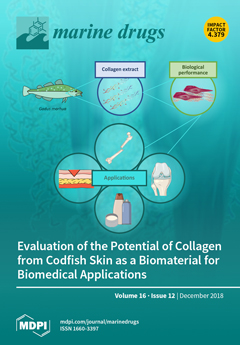The green alga
Chlamydomonas reinhardtii was recently been shown to be an effective bio-manufacturing platform for the production of recombinant proteins. The advantage of using
C. reinhardtii is that it is fast to grow, inexpensive to culture, and relatively safe. However, the expression
[...] Read more.
The green alga
Chlamydomonas reinhardtii was recently been shown to be an effective bio-manufacturing platform for the production of recombinant proteins. The advantage of using
C. reinhardtii is that it is fast to grow, inexpensive to culture, and relatively safe. However, the expression of foreign proteins is always low and difficult to purify in
C. reinhardtii. Human kallikrein has the potential to be developed into certain drugs, like insulin. Therefore, its biosynthesis is important to drug development. In this study, we synthesized the
sg gene, a signal peptide sequence of alkaline phosphatase, and inserted it into a pH124 plasmid, which contains a
HSP70A-RBCS2 promoter and a
RBCS2 terminator. Then, we inserted the human kallikrein gene
klk1 behind the
sg sequence to make a pHsgk124 vector. The pHsgk124 were transferred into a cell-wall deficient strain of
C. reinhardtii, cc-503, by using the glass bead method. Southern blot analysis showed that
sg and
klk1 were incorporated into genes of the transgenic
C. reinhardtii. RT-PCR analysis showed that it had an active transcription and its expression increased three times under heat stress. Western blot analyses of proteins inside and outside cells (in the culture medium) showed that
klk1 was expressed in the cell and the resulting protein was secreted into medium. An enzyme activity assay showed that the recombinant protein had the ability to hydrolyze the specific substrate H-D-Val-Leu-Arg-Pna. In conclusion, we successfully bioengineered
C. reinhardtii to produce and secrete human kallikrein protein, which has important biomedical implications.
Full article






